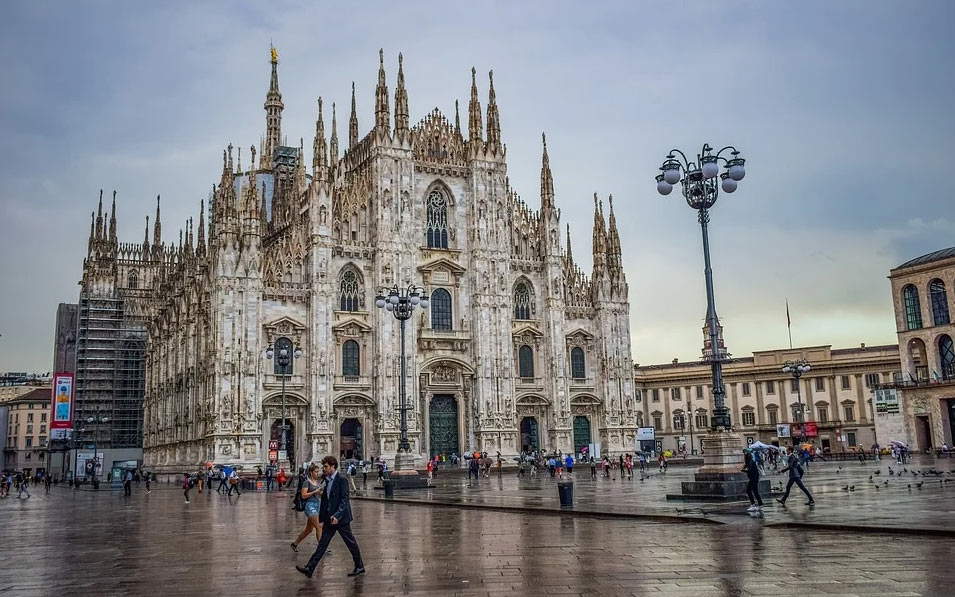Until a few months ago, it was very difficult to question the growing attractiveness of cities: agglomeration economies, concentration of wealth, and increased opportunities related to the availability of knowledge, infrastructure, and resources made cities very relevant economic and social actors that posed significant challenges to possible development models. The United Nations in 2018 indicated that 55 percent of the world’s population lives in cities and the percentage was estimated to be 68 percent by 20501. The benefits of urban living are not evenly distributed among residents; the attractiveness of cities is often achieved at the cost of growing social inequalities, intense negative environmental externalities, and sky-high economic investment. It is not surprising that one goal among the UN’s 17 in the 2030 Agenda (Goal 11) specifically addresses cities and their use of resources, including natural and cultural heritage.
Awareness of the political, social and economic relevance has led to a growing competition among cities to attract capital, talent and tourists whether through one-shot initiatives (such as the Olympics, or the Italian capital of culture) or longer-term choices (such as the location of businesses or universities). And within this framework attention has grown around culture as a useful resource to uniquely characterize cities.
Starting in the 1980s, the term “creative city” began to be used to emphasize the relevance of the cultural and creative sectors in supporting socioeconomic development at the territorial level. This happened at the same time as a historical phase of profound transformation of Western cities, which underwent the choices of productive relocation by large manufacturing companies and the gradual shift of major commercial axes “southward and eastward.”
 |
| Milan, Piazza del Duomo |
Early projects were often characterized by massive investments in urban redevelopment of former industrial areas or waterfronts with the involvement of international archistars, which undoubtedly changed not only the landscape of many cities, but resulted in a massive channeling of resources into specific neighborhoods. The term “emblematic projects” has often been used to emphasize the exceptional nature of these interventions, justify their complexity and stimulate the attention of a wide variety of stakeholders2.
More recently, the effort of public and private operators in the cultural sphere at the urban level has been oriented toward enhancing social, cultural specificity and strengthening the civic dimension in different city neighborhoods, stimulating social innovation and cultural entrepreneurship. This progressive focus on the dimension of cultural participation in addition to or in partial antithesis to the dimension of attraction is partly explained by the 2008 crisis; the notion of participation incorporates various elements that characterize urban relations, from information sharing to public consultation to co-production.3
Contemporary cultural policies are characterized by the coexistence of four different paradigms4 :
The paradigm of excellence, characterized by public or philanthropic support of noncommercial, innovative or young artistic expressions5;
The cultural democratization paradigm, which aims to facilitate access to quality cultural goods and activities to the widest number of people6
The cultural democracy paradigm, which aims to provide each social group with the opportunity to see its cultural practices recognized and supported7
And finally the cultural economy paradigm, which focuses on the direct and indirect economic impact of cultural sectors8.
And then came Covid, as the debate on the UN Sustainable Development Goals took hold and the term sustainability gradually gained meaning not only in the environmental dimension, but also in the social and economic dimensions. For cities, the central issue is functioning economically in the presence of social distancing9. As much as Covid has slowed activities in cities and international mobility, and work from home and digitization have made living in small towns more attractive than before, I do not believe that the attractiveness of cities will be diminished.
Research on Covid’s impacts on cities has so far focused on 4 themes: environmental quality; socio-economic impacts; city management and governance; transportation infrastructure and urban design.10 Little, too little attention has been given to the role of cultural organizations in rethinking a new normal; in this sense, the cities of Milan and Reggio Emilia are important exceptions in Italy. So far we have without particular difficulty associated culture with the ability to attract tourists (Objective 8.9) and to include marginalized communities (Objectives 10 and 11). The toil of schools and several interesting experiments return us to a renewed contribution of cultural organizations to the world of education and education (goal 4); it is time to explore more decisively the relationship with research (goals 4 and 8) and with health, especially mental health (goal 3).
1 United Nations, 2018 https://www.un.org/development/desa/en/news/population/2018-revision-of-world-urbanization-prospects.html
2Grodach, C. & Loukaitou?Sideris, A. (2007) Cultural development strategies and urban revitalization, International Journal of Cultural Policy, 13:4, 349-370
3 Rowe, G., & Frewer, L. J. (2000). Public participation methods: A framework for evaluation. Science, Technology, & Human Values, 25(1), 3-29.
4 Bonet Negrier 2018 The participatory turn in cultural policy: Paradigms, models, contexts Poetics (66), 64-73.
5 Throsby, D. (2001). Economics and culture. New York: Cambridge University Press.
6 Psychogiopoulou, E. (Ed.). (2015). Cultural governance and the European Union protecting and promoting cultural diversity in Europe. London: Palgrave MacMillan.
7 Pyykkonen, M., Simanainen, N., & Sokka, S. (2009). What about cultural policy? Helsinki: Minerva.
8 Hughson, J., & Inglis, D. (2001). Creative industries’ and the arts in Britain: Towards a third way in cultural policy? International Journal of Cultural Policy, 7(3), 457-478.
9 Lichfield G (2020) We’re not going back to normal. MIT Technology Review, March 2020
10 Sharifi A., Khavarian-Garmsir A.R. (2020) The COVID-19 pandemic: Impacts on cities and major lessons for urban planning, design, and management, Science of The Total Environment, 749.
Warning: the translation into English of the original Italian article was created using automatic tools. We undertake to review all articles, but we do not guarantee the total absence of inaccuracies in the translation due to the program. You can find the original by clicking on the ITA button. If you find any mistake,please contact us.